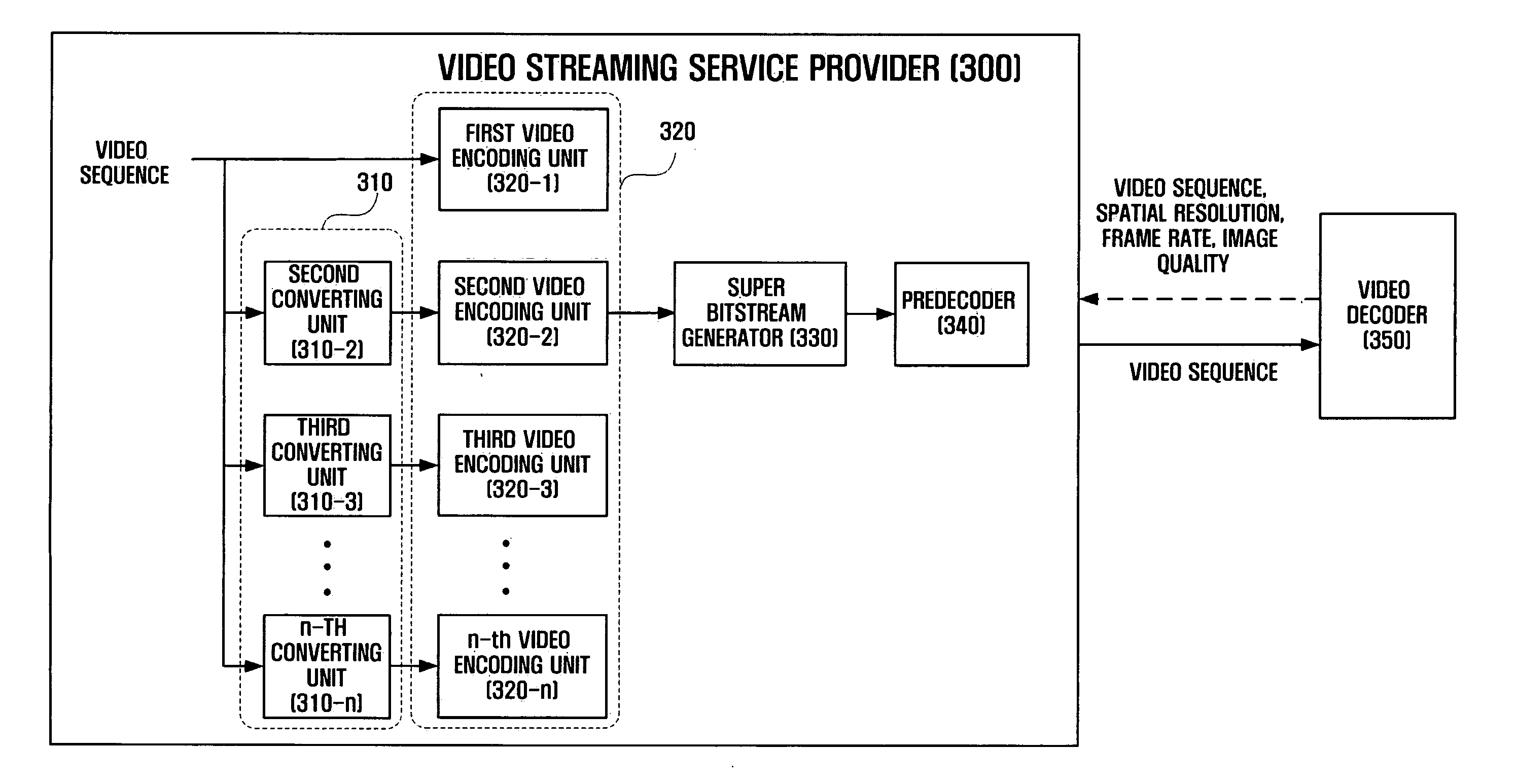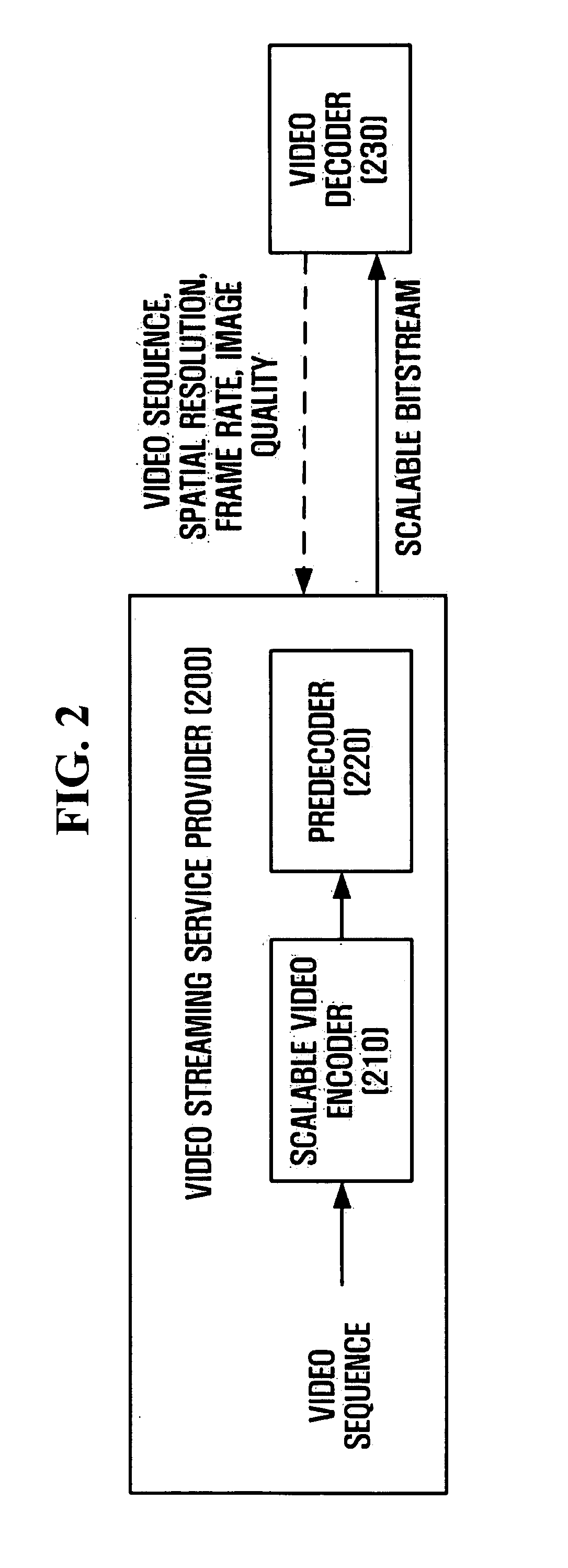Method and apparatus for video coding, predecoding, and video decoding for video streaming service, and image filtering method
a video coding and video stream technology, applied in the field of video coding, predecoding and video stream decoding for video streaming service, can solve the problems of low scalability, high compression rate, and low scalability of the bitstream obtained by coding the video sequence with these coding algorithms, so as to improve the image quality of the video sequence and increase the efficiency of the video coding algorithm
- Summary
- Abstract
- Description
- Claims
- Application Information
AI Technical Summary
Benefits of technology
Problems solved by technology
Method used
Image
Examples
first embodiment
[0080] To solve this problem, the video streaming service according to the present invention uses a coding scheme that involves generating a plurality of scalable bitstreams and combining them together into a single super bitstream instead of predecoding a scalable bitstream in order to provide a video sequence at various resolutions, frame rates, and image qualities.
[0081] Referring to FIG. 5C, first through third scalable bitstreams 531 through 533 are generated at different resolutions from a single video sequence and then combined into a super bitstream 530. Alternatively, one or a plurality of scalable bitstreams with different resolutions and one or a plurality of non-scalable bitstreams may be generated for the single video sequence, which will be described later with reference to FIG. 5D.
[0082] The first scalable bitstream 531 is generated from a video sequence at the highest resolution and frame rate (e.g., 704×576 resolution and 60 Hz frame rate). The second scalable bits...
second embodiment
[0086] Referring to FIG. 5D, the coding scheme is used to generate a plurality of bitstreams containing a non-scalable bitstream. That is, a super bitstream 540 consists of first and second scalable bitstreams 541 and 542 and a third non-scalable bitstream 543. While the first and second scalable bitstreams 541 and 542 are generated using a scalable video coding scheme, the third bitstream 543 is generated using a non-scalable video coding scheme such as AVC.
[0087] Meanwhile, the video streaming services according to the embodiments of the present invention require more data storage space than using the single scalable video stream shown in FIG. 5B. A method for reducing this overhead will now be described with reference to FIGS. 6 and 7, assuming that a super bitstream contains two scalable bitstream.
[0088]FIG. 6 is a diagram for explaining sharing of an intraframe according to a first embodiment of the present invention. Frames in the video sequence used in video coding can be d...
PUM
 Login to View More
Login to View More Abstract
Description
Claims
Application Information
 Login to View More
Login to View More - R&D
- Intellectual Property
- Life Sciences
- Materials
- Tech Scout
- Unparalleled Data Quality
- Higher Quality Content
- 60% Fewer Hallucinations
Browse by: Latest US Patents, China's latest patents, Technical Efficacy Thesaurus, Application Domain, Technology Topic, Popular Technical Reports.
© 2025 PatSnap. All rights reserved.Legal|Privacy policy|Modern Slavery Act Transparency Statement|Sitemap|About US| Contact US: help@patsnap.com



